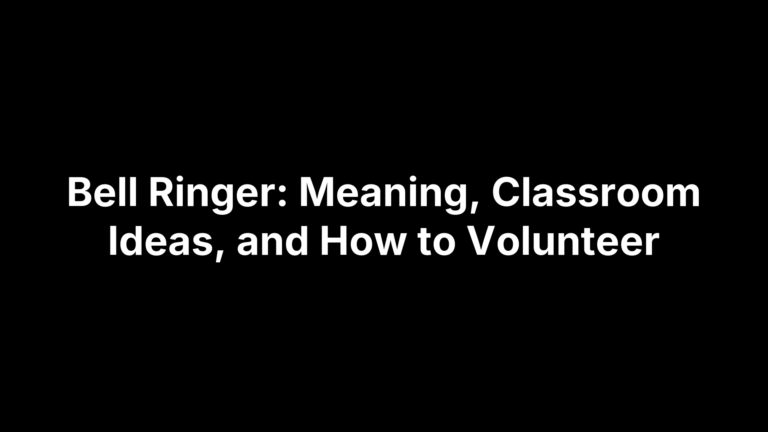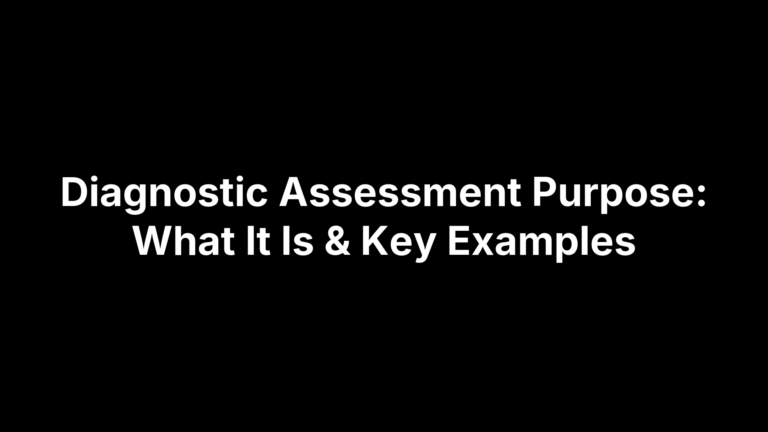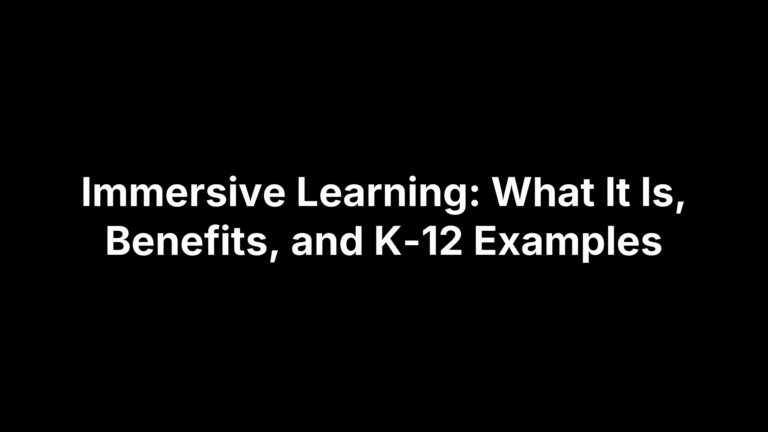Using AI in the Classroom: Tools, Examples, and Best Practices
Picture shutting your laptop at 4:00 p.m. because grading, leveled worksheets, and tomorrow’s slideshow finished themselves during prep. That isn’t sci-fi; carefully chosen AI tools already do it for thousands of classrooms, often for free.
We’ll treat “AI” as any algorithm or generative app that automates, adapts, or enriches learning—LLMs, adaptive platforms, image generators, data dashboards, and more. You’re about to get 17 classroom-ready tactics with step-by-step directions, example tools, ethical guardrails, and Monday-morning shortcuts. No coding or pricey hardware required.
Scan the list, grab the idea that solves your biggest headache—grading, differentiation, engagement, accessibility, or time management—and test it this week. Then enjoy the extra hours you just reclaimed for students, family, or a quiet cup of coffee.
1. Simplify Differentiation and Prep with The Cautiously Optimistic Teacher’s Free AI Toolkit
Start with tools built by colleagues who understand the bell rings every 47 minutes. Our site’s no-cost AI suite trims planning from hours to minutes—no downloads or coding.
Why this toolkit earns the top spot
It bundles four classroom-tested mini-apps—Differentiated Instruction Helper, Worksheet Maker, Question Generator, and Report Card Commentor—free, privacy-respecting, and usable on any browser after a 60-second sign-up.
Quick-start walkthrough for each built-in tool
- Sign up with a school email; no credit card.
- Paste standards, text, or keywords; choose grade and Bloom’s level.
- Click Generate to receive an editable Google Doc, PDF, or LMS embed.
- Typical speed: leveled worksheet in 3 min; 20 higher-order questions in 30 sec.
Best-practice classroom use cases
- Bell-ringer variants for mixed readiness
- Exit-ticket quizzes minutes after a read-aloud
- Individualized report-card comments that still sound human
Ethical & pedagogical considerations
Adopt the cautiously optimistic mantra: proofread every output, verify alignment with objectives, and strip student identifiers before saving or sharing.
2. Deliver Personalized Practice with Adaptive Learning Platforms
Tired of handing out the same worksheet to everyone? Adaptive learning tools use AI to tailor questions, hints, and pacing so each student practices exactly what they need—no more, no less.
How adaptive algorithms pinpoint student needs
The software tags every problem to micro-skills, records each click, then recalibrates difficulty on the fly. Platforms such as DreamBox, IXL, and Khanmigo create mastery paths, surface prerequisite gaps, and sprinkle in confidence-boosting wins to keep motivation high.
Setting up a class in 15 minutes
Open a free teacher account, sync your roster via Google Classroom or Clever, and launch the built-in diagnostic. Students complete a short baseline set; you select target standards and weekly goals. Click Assign—your differentiated homework is live before the bell.
Monitoring progress and intervening smartly
Dashboards convert raw attempts into color-coded heat maps. When “fractions as division” glows red, schedule a mini-lesson or pull a three-student group. One-click reports feed parent emails or IEP updates while data stays within district walls.
3. Speed Up Grading with AI-Assisted Assessment Tools
Marking 120 worksheets can swallow your entire prep. If you’re using AI in the classroom for assessment, start here: these tools read handwriting, match answers to rubrics, and bulk-apply comments so you finish in minutes, not hours.
What AI grading can (and can’t) do accurately
OCR turns scans into text, rule engines score multiple-choice, and machine learning compares open responses to exemplars. Great for factual or formulaic work, less reliable on humor, creativity, or nuanced argument.
Tool workflow example (Gradescope or similar)
- Upload PDFs or phone photos.
- Build a rubric once.
- Auto-group identical answers; grade one, apply to all.
- Sync results to Google Classroom. Expect 50 papers graded in 10 minutes.
Maintaining feedback quality and academic integrity
Add one personalized note per student, reread borderline cases, and teach citation alongside similarity reports so the checker becomes a coach, not a cop.
4. Run a “Writing Lab” Station Powered by Generative AI Feedback
Pop a few laptops on a side table, post a prompt sheet, and you have an instant writing lab where ChatGPT, Bing, or Gemini serves as on-demand tutor—not a ghostwriter.
Setting classroom norms for AI writing assistants
- Students must paste only their own text.
- Always ask the bot for “suggestions, not rewrites.”
- Cite AI help in a footer (“Draft improved with ChatGPT suggestions, 8/28/25”).
- Final decisions stay human.
Practical station rotation model
- Ten-minute block in a workshop carousel.
- Student pastes paragraph, prompts: “Highlight unclear sentences” or “Offer two stronger verbs.”
- Student applies agreed edits, saves version history for you to review.
Teaching metacognition through AI critique
Have writers jot a quick exit slip: What advice did you accept, reject, and why? Pair-share findings next class; pattern spotting builds critical reading of both AI and self.
5. Facilitate Student-Led Inquiry with AI Chatbots as Virtual Tutors
Curiosity sticks when students get instant, individualized answers instead of waiting for you to finish attendance. Free or freemium chatbots—Khanmigo, Perplexity, Claude, ChatGPT—can sit beside every desk, nudging learners to ask deeper questions while you monitor from afar.
Designing effective questioning prompts
Model the move from vague to precise:
- Start with “Explain photosynthesis.”
- Upgrade to “How does the light-dependent reaction differ from the Calvin cycle in everyday language?”
Post a “prompt menu” in your LMS so students can pick sentence stems like “Compare X and Y,” “Generate a counter-argument,” or “Explain like I’m 12.”
Managing accuracy and bias
Require a two-source confirmation: chatbot claim → textbook → vetted website. If discrepancies pop up, have the student log them on a class “AI Hallucination” board; discuss patterns on Friday.
Sample mini-lesson
During a Dust Bowl unit, assign roles in a Socratic circle—human historians plus one AI “expert.” Students question the bot live, fact-check responses in real time, then debate whether its evidence holds water.
6. Create Multimedia Lesson Materials with Generative Image and Video AI
Need a diagram for tomorrow’s lab or a 60-second teaser video? Generative media tools let teachers produce slides, comics, and clips on demand—another low-friction way of using AI in the classroom to boost engagement.
Fast content creation workflow
Open Canva’s Magic Media, Adobe Express, or Microsoft Designer, type an image or video prompt (“solar eclipse explained for 5th graders”), pick a style, and export directly to Google Slides. Ten clicks, two minutes, done.
Visual literacy mini-projects
Ask students to generate an image for each vocabulary word, then write a caption defending how color, composition, or symbolism conveys meaning. Peer voting crowns the most accurate visual metaphor.
Copyright & ethical usage
Clarify that most classroom projects fall under educational fair use, while public posts may need commercial licenses. Always credit: “Image generated with Canva Magic Media, prompt by Aiden, 8/28/25.”
7. Support English Language Learners with Real-Time Translation and Captioning
Language shouldn’t block comprehension. By using AI in the classroom for instant translation and live captions, you give multilingual learners immediate access to teacher talk, peer discussion, and course media without pausing instruction.
Tool roundup
- Microsoft Translator – conversation mode pushes subtitles straight to student phones.
- Google Slides live captions – auto-transcribes teacher speech into 80 + languages.
- YouTube auto-translate – converts any video into multilingual closed captions in seconds.
Classroom integration
- Project real-time captions during mini-lectures.
- Small groups join a bilingual chat via QR code.
- Save transcripts as scaffolded notes or absence make-ups.
Avoiding overdependence
Fade supports gradually: pair captions with vocabulary walls and require periodic English-only summarizing so confidence, not the app, does the heavy lifting.
8. Enhance Reading Comprehension through AI-Powered Text Simplification
Overly dense prose can tank engagement fast. Using AI in the classroom to simplify passages lets every reader tackle the same concepts without drowning in unfamiliar syntax.
How text-leveling algorithms work
Algorithms analyze Lexile, sentence length, and tier-two vocabulary, then rewrite with shorter clauses or synonym swaps while preserving core ideas. Some tools also flag idioms and suggest quick glossaries.
Step-by-step with a free tool
- Copy the article into Rewordify or ChatGPT.
- Prompt: “Rewrite for grade 6, keep key terms.”
- Compare original vs. simplified side-by-side.
- Export as Google Doc for annotation.
Differentiation strategies
Provide both versions: advanced readers annotate nuances the AI trimmed, emerging readers highlight words that still confuse them. Gradually phase in harder sentences as fluency grows.
9. Scaffold Research Projects with AI Research Assistants
Research projects stall when kids stare at blank screens. AI helpers like ChatGPT, Perplexity, or Elicit jump-start momentum by outlining ideas and surfacing quality sources in seconds.
Generating starter outlines and keyword lists
Prompt the bot with your essential question and ask for: “Three-part outline plus 10 search keywords.” Students revise the scaffold, then copy keywords into databases.
Teaching source evaluation
Have AI list three links per keyword, but stop there. Learners run each site through the CRAAP checklist and log ratings in a shared Google Sheet.
Avoiding plagiarism
Students paste notes back into the chat and request: “Paraphrase, cite source.” They compare bot output to original, annotate wording changes, and submit both through the plagiarism checker.
10. Stimulate Critical Thinking with AI-Generated Socratic Questions
You can’t force genuine inquiry, but you can seed it. Using AI in the classroom to draft Socratic questions frees you from last-minute brainstorming and ensures every student gets pushed beyond recall. Large language models generate fresh, tiered prompts in seconds, letting you spend your energy coaching the dialogue rather than writing it.
Creating higher-order question sets in minutes
Prompt template: “Write 12 open-ended, Bloom’s ‘Analyze–Evaluate–Create’ questions on mitosis for 9th grade. Vary stems (Why, How, What if).” Copy the output into a doc, bold the toughest three, and you’re prepped before the bell.
Implementation in discussion formats
Use printed cards for fishbowl or pin a Jamboard of questions during jigsaw groups. Rotate students as questioners, responders, and summarizers; the AI list keeps conversation momentum high.
Encouraging student question ownership
After each round, learners rank the AI prompts: keep, tweak, or toss. Groups rewrite weak questions, then challenge peers with their improved versions—turning critical analysis toward both content and the AI itself.
11. Differentiate Instruction with AI-Designed Worksheets and Quizzes
One-size-fits-all handouts under-serve both strugglers and fast finishers. By using AI in the classroom to auto-design worksheets and quizzes, every learner meets the same target through just the right amount of stretch.
Beyond multiple-choice: varied item types
Prompt the generator for cloze passages, drag-and-drop labels, multi-part word problems, or short-answer prompts auto-scored via keyword matching—much richer than bubbles on a Scantron.
Workflow example using The Cautiously Optimistic Teacher’s Worksheet Maker (cross-reference #1)
Open the tool, paste three key concepts, slide Bloom’s dial to “Apply,” choose beginner, proficient, and advanced tiers, then hit Generate. Ninety seconds later you’re downloading a color-coded Doc or auto-graded Form.
Data-driven grouping
Check the accuracy report, sort students into bands, and arrange tomorrow’s skill stations in seconds.
12. Streamline Lesson Planning with AI Curriculum Mapping Tools
Unit outlines that once swallowed Sundays now appear in minutes. AI curriculum mappers read standards, cluster skills, and draft calendars, freeing you to design rich learning experiences.
Selecting standards and pacing
Upload your state or IB standards—or paste them into ChatGPT with the prompt “group into six thematic units, 3-weeks each.” The tool sequences prerequisites and flags gaps automatically.
Collaborative planning
Share the generated map in Google Docs; teammates add links to assessments, labs, and field trips. Version history tracks edits, keeping accreditation evidence tidy.
Maintaining teacher voice
Before printing, sprinkle your signature hooks—local case studies, student choice projects, culturally responsive texts—and adjust timing to honor assemblies, testing windows, and inevitable snow days.
13. Boost Classroom Management with Predictive Analytics from LMS Data
Your LMS quietly crunches behavior data all day. Open the predictive tab and you’ll spot trouble patterns long before they turn into missing work or chronic absences.
What behavior patterns AI can flag
Common red flags it surfaces:
- Late work spikes before unit exams
- Logins drop three days straight
- Multiple quiz retries on one skill
Setting up alerts and interventions
Respond in real time, not next week.
- Set phone alerts for any pattern you choose
- Auto-email guardians after two absences
- Book a five-minute check-in via LMS calendar
Protecting student privacy
Share only anonymized charts; keep raw data behind the district firewall. Skip third-party exports unless parents consent.
14. Teach AI Literacy and Ethics through Hands-On Mini-Projects
Using AI in the classroom isn’t just about faster grading—it’s also a chance to demystify the technology itself. A short, interactive mini-project gives students language to discuss how algorithms are built, where they stumble, and why humans must stay in the loop.
Key concepts students should grasp
- Training data & representation: who’s included, who’s missing
- Bias & hallucination: systematic skew vs. random nonsense
- Privacy & consent: what data the tool stores, who sees it
- Responsible use: crediting AI assistance, setting boundaries
Sample project: “Build a Bias Detective”
- In groups, students prompt an image generator with inclusive descriptions (e.g., “CEO,” “nurse,” “scientist”).
- They screenshot results, tally demographic patterns, and compare to real-world statistics.
- Groups propose prompt tweaks or policy fixes to reduce bias.
Assessment ideas
- One-page reflection explaining their most surprising finding
- Infographic summarizing bias evidence and solutions
- Lightning talk evaluated with a rubric weighing accuracy, clarity, and ethical insight
15. Use AI for Accessibility: Generate Audio Descriptions and Alt Text
When you’re using AI in the classroom, accessible visuals matter. AI-generated alt text and audio descriptions turn slides and photos into content screen readers can voice, giving every student equal footing.
Meeting diverse learner needs
Alt text helps blind students; narrated descriptions aid auditory learners, ESL students, and anyone multitasking.
Quick creation workflow
- Drop an image into Microsoft Seeing AI or Chrome’s built-in “Generate Alt Text.”
- Tweak the one-sentence result for precision, then record a 20-second audio note on your phone and attach it in Slides.
Classroom activity
Students pair up: one drafts a description solo, partner enhances with AI; class debates which is clearer and keeps the human voice.
16. Conduct Real-Time Formative Assessment with AI-Enhanced Polling Tools
Nothing pinpoints misconceptions faster than a live poll that grades itself while you teach. By using AI in the classroom through tools like Quizizz AI or Nearpod’s “Time to Climb,” you get color-coded analytics the moment students click submit—no exit tickets to lug home.
Live insight features
- Heat maps highlight items most students missed in seconds.
- Auto-tagging links each wrong answer to the related standard.
- Confidence meters surface who guessed, who knew, and who is stuck.
Running a 5-minute pulse check
- Project one adaptive quiz item; students respond on any device.
- Review the instant dashboard; reteach or extend based on the trend.
- Click “export” to log scores to Google Classroom before the bell rings.
Encouraging student reflection
Display anonymized class results and ask learners to set a micro-goal: “I’ll revisit parallel lines tonight.” A quick journal entry cements ownership, turning fast data into smarter study habits.
17. Automate Parent Communication and Progress Reports with AI
Parents value brief, consistent updates more than a bulky packet every quarter. By using AI in the classroom’s back office, you can auto-pull grades, behavior notes, and attendance from your LMS, generate a warm email, and schedule it before you head home.
Drafting personalized updates
Tools like TeacherMail AI or ChatGPT + spreadsheet merge weave data into human-sounding paragraphs: “Marcus aced the fractions quiz with a 92 %, and his class participation has jumped this week.” Edit tone, add a growth goal, hit Send—fifteen students covered in under five minutes.
Translation features for multilingual families
Most generators offer one-click translation into 100 + languages. Preview the output, attach the original English version, and invite families to reply in whichever language feels comfortable; the AI will back-translate responses for you.
Maintaining the human touch
Automation handles the boilerplate, not the relationship. Sprinkle in a personal anecdote, proofread pronouns, and reserve phone calls or video chats for sensitive issues. When AI lifts the clerical load, you gain time for genuine conversation.
Your AI Journey Begins Today
From simplifying differentiation to automating parent emails, you’ve seen 17 ways AI can lighten paperwork, sharpen instruction, and ramp up student voice. Pick one tactic—say a real-time poll or adaptive homework—and test it for a week. Notice what frees up brain space and what still needs tweaking. Then layer in a second, and a third, until using AI in the classroom feels as routine as taking attendance.
Remember: the best results come when human expertise guides the algorithm. Keep reviewing outputs, celebrating creativity, and modeling ethical use for students.
Ready for more bite-sized tutorials, prompt packs, and free tools? Join the newsletter at The Cautiously Optimistic Teacher and keep your Friday inbox stocked with fresh ideas you can use Monday morning.






